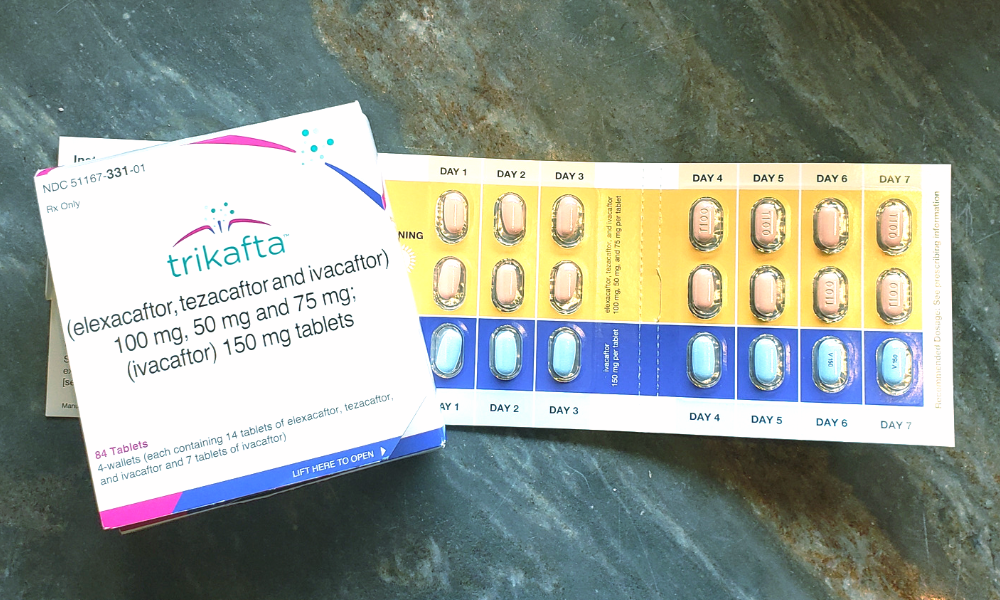I’ve lived in this body on this Earth for forty years. Every day, as I walked and talked, learned and grew, sang and danced, my very body that enabled me to do all these things was fighting me from the inside. A systemic defect in the way my body processed salt caused a daily onslaught on my digestive system, my lungs, my pancreas, my sinuses – clogging them with thick mucus that made it hard for them to do their important jobs correctly.
We all know water is essential for human life. But not everyone realizes that salt moves water. Salt’s ability to move water is why salting your food makes it taste better – that’s how salt amplifies the flavors that our tongues detect.
And that’s also why salt is important in our bodies – it helps the body move water to where it needs to be. Water is essential to the mucus that lines the lungs, the digestive tract, the sinus cavities of every human being. That mucus is a protective layer that guards those sensitive organs against dangerous invaders from the outside world – dust, bacteria, pollutants – and allows the body to remove them.
When salt can’t move water
Cystic Fibrosis causes the body’s essential method for transporting salt – what’s called a CFTR protein – to malfunction. So in my body, water can’t always get to where it needs to be, causing an imbalance in that vital mucus layer. This means that instead of the mucus being protective, it traps those invaders in my lungs in a sticky mucoid layer. Despite all my efforts to get them out, they’ve built themselves a colony in the microbiome of my lungs.
They set up camp about 25 years ago, and stubbornly refuse to leave. They attempt to tear down my lungs, sledgehammering themselves the space they want. My body fights back. My immune system gives an inflammatory response as a defense mechanism. My lungs develop scar tissue that blocks off the invaders into deep, isolated corners.
I do everything I can to protect myself. I diligently take my numerous medications and do airway clearance therapies multiple times a day. I eat the nutritious food my body needs in order to keep fighting. I exercise. I practice yoga. I keep singing, because I’ve found that’s one of the best ways I can exercise my lungs, and simultaneously reassert my own voice and identity in the face of this disease. But it all is exhausting, and it doesn’t eradicate the invaders – all it does is prolong the battle.
Confronting the school bus bully
Cystic Fibrosis is like the relentless bully on the school bus who holds your hand into a fist, and repeatedly makes you punch yourself in the face saying, “Quit hitting yourself! Quit hitting yourself!” You just want it to stop.
You want to stop. Breathe. And recover.
After forty years, I’m hoping and praying that we’re finally about to kick the bully off the bus. The triple combination CFTR modulator drug, Trikafta, showed up at my house today.

It’s taking all my willpower not to tear into the box and take my first dose. I’m participating in the PROMISE study that will track its impacts over the next two years, and am waiting for my pre-drug visit to be scheduled. The FDA approval came so quickly that my CF center wasn’t ready to start the study, so the team is scrambling to get all the lab requisitions and providers in place.
But I’m fortunate that my health is stable enough that I can afford to wait. It feels like the longest week of my life, but now that it’s here in my hands and the fight to get it is over, I can relax and breathe and wait.
The mysterious “purge”
I hear my friends who’ve already started taking Trikafta talking about “the purge” – not everyone experiences it, but many do. Some people are clearing deep mucus plugs within hours. Some are reporting that they just *feel* better, having more energy than they ever knew was possible. Some are even reporting that they have experienced deep belly laughs without coughing fits afterward. (That is my DREAM!)
The common thread in these stories is change. Change after a lifetime of CF – the school bus bully – not giving you a break. I want so badly to experience that change. I want to experience freedom from the bully. I want to be present for it, and notice every little thing that happens as my body reclaims itself.
For 40 years, my body has been focused on fighting for my life. But once the bully is gone, the internal work of healing can begin.
The difference between curing and healing
“There is an important distinction to make between curing and healing. To cure [a symptom] is to fix a particular part. . . . While a patient remains passive when cured by someone else, healing is an involved activity, less dependent on external circumstances than on the work you are prepared to do within yourself.”
Your Body Speaks Your Mind by Deb Shapiro
Now to be clear, Trikafta is not a “cure” – my body will continue to have those colonies of bacteria, and the walls of my lungs will always show the scars of battle. But my hope is that it will at least stop the onslaught, so I can do that work of internal healing as I give my body the time and space it needs to heal.
Fortunately, I have a practice I’ve learned that is just the thing for creating this internal, nourishing space. (Spoiler alert: it’s yoga.)
Internal healing means letting go of past trauma to move forward
While we don’t necessarily think of CF as medical trauma, the fact is that years of physical and mental stress can train your brain to fast-forward into a fight-or-flight response when we perceive any sign of danger. This can lead to hypervigilance, anxiety, depression, chronic pain, and mood disorders. If that sounds to you like the laundry list of symptoms of PTSD, you’re not wrong. Fighting the bully on the school bus every day of your life can do that to a person.
But the good news is that neuroplasticity – essentially, the brain’s ability to change over time – enables us to retrain our brain to respond differently to those stressors. The sympathetic nervous system is responsible for the fight-or-flight response that gets you out of imminent danger. (That’s the system that’s overly activated in PTSD.) But our body also has a built-in counterpoint to that – the parasympathetic nervous system, which is where healing and recovery happens – or “rest and digest.”
Yoga can help us activate that “rest and digest” function, which is beneficial for managing PTSD, chronic pain, and other long-term health conditions. For the past few years, I’ve been studying yoga for trauma and yoga therapy foundations as part of my 300-hour training en route to RYT500 (which I expect to complete about a year from now).
So when I start Trikafta next week, I’ll be applying what I’ve learned and focusing on “rest and digest” in my personal yoga practice. To give my body the space to heal, and to make the most of the opportunity that Trikafta presents.
“Rest and Digest” with CF Yogi in December
CF is a diverse and highly individualized disease. It’s rare for many of us to experience the same thing at the same time. But for a little while, many of us in the CF community are going to be experiencing the changes that Trikafta brings at the same time. So for our December classes at CF Yogi, we’re programming classes that support “rest and digest,” tuning in with your body and mind, and creating space where inner healing can happen.
Monday evenings: Yoga Nidra with Chelsea Spruance
yogic sleep for deep relaxation
Saturday mornings: Yoga for Inner Healing with Katie Malik
breathwork and gentle flows for physical and emotional recovery
I hope you’ll join us. Whether you have Trikafta (or not), whether you have CF-related trauma (or not), it’s always beneficial to take a break to rest and digest.
There’s no way of knowing in advance how well Trikafta will work for me. But I want to give it every possible opportunity to help me heal.
Registered CF Yogis – watch your inbox for your December class invitations arriving the day after Thanksgiving! Not signed up yet? CF Yogi offers free online yoga classes to people with Cystic Fibrosis and their loved ones — register here!


Sounds very exciting Katie I’ll be thinking about you You are an amazing young woman I’m so glad you have another weapon to help you in this battle.i picture you in my mind as a young beautiful woman sword in hand Shield ready to battle whatever befalls her God bless you child